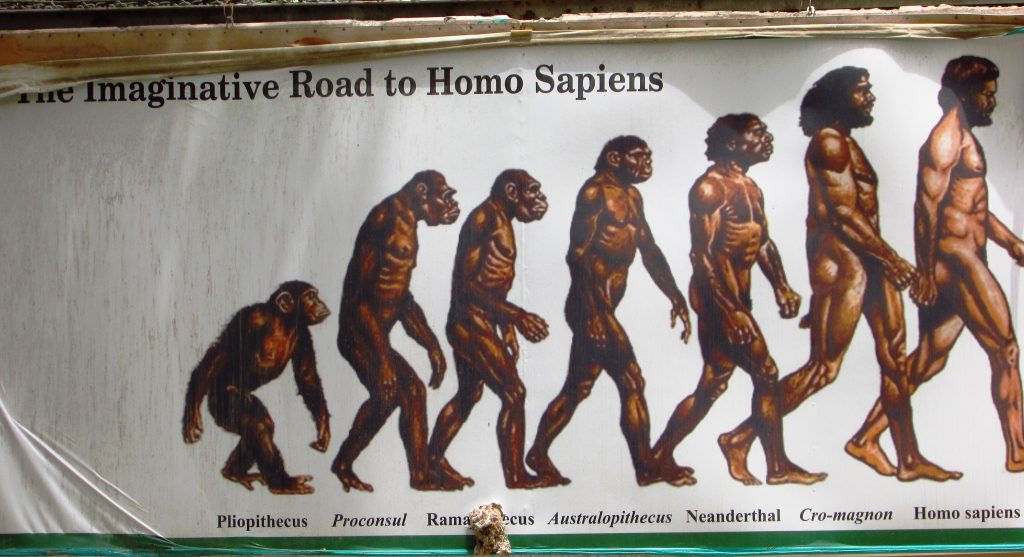The idea that evolution is a hierarchy of complexity with humans on top lurks in everything from biology classes to politics. It’s time to unlearn this false and harmful view.
Simplistic, linear views of evolution incorrectly portray humans as more evolved than other species and often reveal racial biases by representing progressively lighter skin tones.
Herschel Walker, the former football star–turned–U.S. Senate candidate from Georgia, made headlines when he recently asked at a church-based campaign stop, if evolution is true, “Why are there still apes?”
This chestnut continues to be echoed by creationists, despite being definitively debunked. Anthropologists have repeatedly explained that modern humans did not evolve from apes; rather, both evolved from a shared ancestor that fossil and DNA evidence indicates lived 7 to 13 million years ago.
But Walker’s question raises a larger, timely point that generally escapes recognition even by some scientists and educators.
A more fruitful query might be, “If evolution is true, why are there still humans?” Why is our species almost universally seen as the logical endpoint of evolution, with all other species serving as inferior detours or temporary placeholders on an inevitable march toward humanity?
This default, hard-to-shake view of evolution has been debunked as definitively as Walker’s ape question. Yet it continues to be echoed in education, policy, business, conservation efforts, and the behaviors of the vast majority of people in Western, industrialized nations.
It is not necessarily surprising that non-scientists might see Earth’s history as a progression toward higher levels of complexity, with humans representing the most complex. What is startling is that traces of this view remain in scientific thought.
Biology teachers seldom realize it underlies lessons of four-chambered hearts “succeeding” over three-chambered hearts, or of simple urinary flame cells in flatworms and nephridia in earthworms “next giving rise to” kidney tubules in “higher” animals. As if humans are the benchmark by which all characteristics should be measured, and developing more human-like organs is a prime indicator of evolutionary advancement.
Worse, the progressive complexity view continues to infect anthropology. It’s exemplified by the iconic “March of Progress”—a linear sequence of slumped apes eventually supplanted by upright humans. And it persists in the ideas that certain “lower” ancestral human populations gave rise to, and were succeeded by, more complex people, who are often depicted as having lighter skin tones.
People must unlearn this idea that biological diversity is an ascending ladder of complexity, with humans on top and nonhuman species as imperfect transitions and lesser beings. The chief result of this misguided worldview is our casual disregard for the natural environment, which—via climate change, habitat destruction, and biodiversity loss—continues to cause disastrous consequences for humans and nonhumans alike.
Paleontologist Steven Jay Gould critiqued pop culture’s sometimes absurd depictions of evolution as a ladder of progress.